Here are some fun and interesting facts about cats and dogs
20th August, 2019
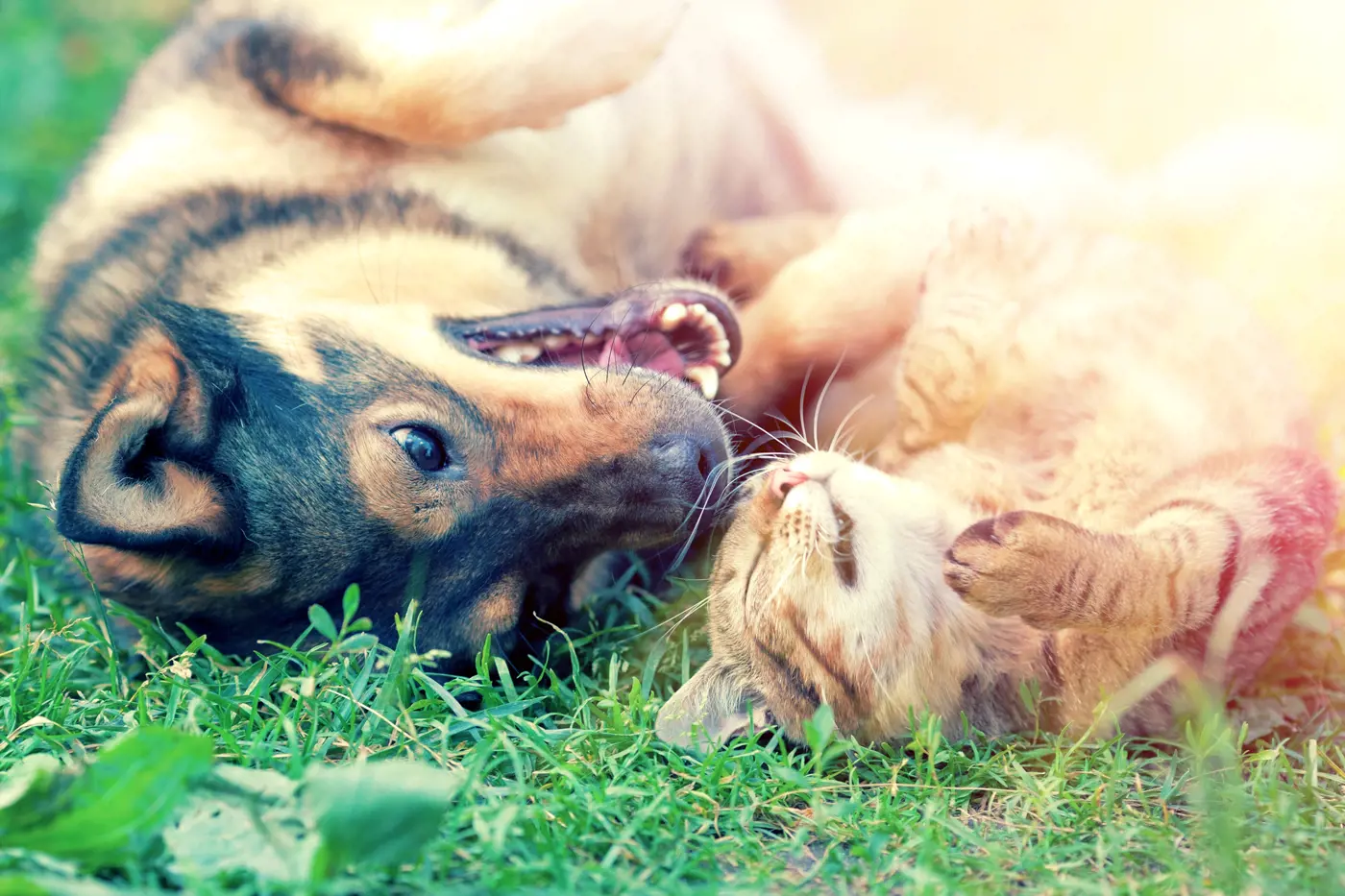
Feline friends or canine chums? We could probably argue for months about why we prefer cats or dogs. But whether you favour Felix or Fido, it’s fair to say pets have been an important part of human lives for thousands of years.
Most pet owners say their house just wouldn’t be a home without their cuddly cat or faithful hound. A recent study even identified how having a pet can increase your chances of being successful and happy. So, there’s no denying it – pets are awesome!
Are you thinking about adopting a new kitten or puppy? Have you considered giving a loving home to a rescue cat or dog? Either way, don’t forget to protect your new best friend with a pet insurance policy from Purely Pets.
It doesn’t matter if you’ve never had a pet or you’re already the proud owner of a cat or dog, there’s always something new and exciting to learn about your favourite four-legged friend. Here are some fun and interesting facts about cats and dogs.
1. Cats are asleep for 70% of their lives
You might think your cat is nocturnal, but they actually tend to be crepuscular, meaning they’re most active at dawn and dusk. Outside of twilight hours, most cats are asleep for at least 16 hours each day. No, they’re not just lazy! Cats are natural predators, and those living in the wild must go hunting for their meals. All that prowling around can be hard work! Taking a siesta between meals helps them build up energy, ensuring they’re well-rested and ready for action when it’s time to catch their next meal.
2. Dogs often look like their owners
In 2004, Michael Roy from the University of California in San Diego conducted research into this phenomenon by taking individual pictures of pups and their owners. A group of volunteers were asked to match each of the hounds to their owners. In most cases where the dog was purebred, they were able to match them to their human accurately. We’re drawn to things that bear a resemblance to ourselves, so it’s no surprise we often end up choosing a pooch that looks a little bit like us.
3. Domestic cats share about 95% of their genetic makeup with lions
Yes, you read that right – your cute little tabby is not so different from its wild cat cousins. Most of the differences between them relate to the genes which determine personality traits, including aggression. Apart from that, lions and tigers have slightly bigger brains (relative to their overall size) than pet cats. Also, their pupils are round instead of almond-shaped and they can’t purr, so it’s a good thing they have a mighty roar instead. Shared behaviours between wild and domestic cats include playing with and stalking prey, pouncing, scratching and urine marking.
4. Sometimes, dogs fall in love
Well, kind of. Paul Zak from Claremont Graduate University in California identified how much oxytocin (aka the ‘love’ hormone) is released in a dog’s brain when they interact with humans. It’s released in a cat’s brain, too, but about five times less. No wonder cats are considered to be aloof. Oxytocin plays an important part in social connections for both humans and dogs. While your dog may not dream of romantic minibreaks or marriage, they can develop strong, long-term bonds with other creatures – including you! So, it turns out puppy love is a real thing, after all.
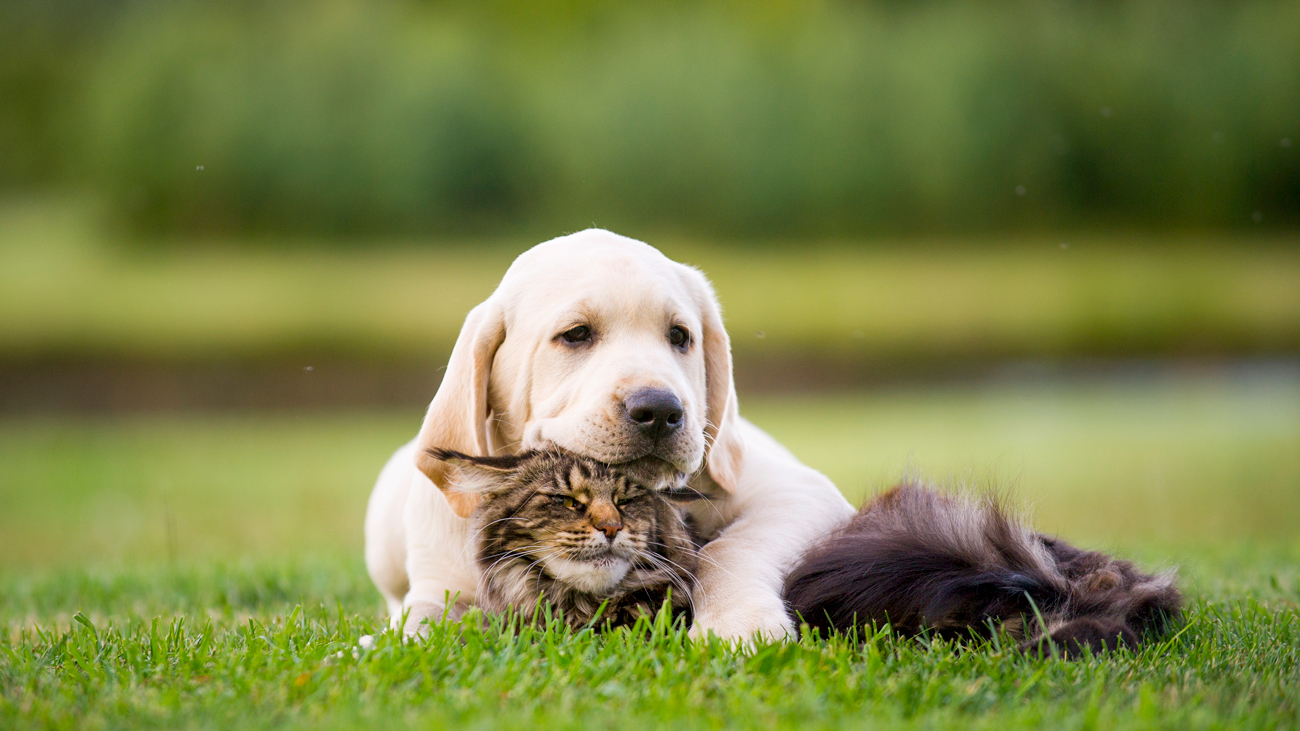
5. Many cats are lactose intolerant
Have you ever given your cat a bowl of milk as a special treat? We know, the age-old image of a cat happily lapping up milk makes this seem like a normal thing to do. But you might be doing your moggy more harm than good since most cats are lactose intolerant. Avoid giving your kitty a sore tum by skipping the milk and serving her a bowl of fresh water instead. Since some cats aren’t very good at drinking enough water, you might like to try a cat water fountain instead of a bowl. Moving water is much more likely to entice them into drinking.
6. Just because a dog is wagging his tail, it doesn’t mean he’s friendly
Dogs wag their tails to signal that they’re willing to communicate, but it doesn’t indicate happiness. It could even mean the opposite, so you’ll need to consider a few other factors to gauge how your canine is really feeling. A wagging tail held high usually signals enthusiasm. The height of the tail gives a good indication of their confidence levels; a high tail means they’re feeling good, but a lower tail suggests they’re nervous or timid. A loose, rolling wag suggests they’re happy, whereas a stiff wag tends to indicate aggression. Finally, a fast wag is usually a positive sign, while a slow wag could mean the dog is unfriendly. Oh, and if your dog’s wagging his whole body, you can feel confident he’s feeling friendly and ready to play.
7. A purring cat isn’t necessarily happy either!
Cats purr when they’re unwell, injured, stressed or in labour, not just when they are happy and content. Cats are independent creatures, so they often find themselves getting into scrapes (usually a fight with the neighbourhood tomcat or eating something they shouldn’t have!). Make sure you have pet insurance in place so you’re able to help keep your cat healthy and happy, no matter what mischief they get up to.
8. The world’s tallest dog was a Great Dane named Zeus
The Guinness World Record holder lived in Michigan, USA and was about the same size as a donkey, measuring just shy of 112cm from foot to withers. On his hind legs, he stretched to 7ft 4in, meaning he well and truly towered above his owners. The current living record holder is Freddy (another Great Dane!) who measures 103.5cm. He lives in Essex, UK and his owner says she spends £10,000 per year feeding him and his sister Fleur daily meals of minced beef, casserole steak and liver.
9. A group of kittens is sometimes called a kindle
No, we’re not talking about the device you read your ebooks on! A group of kittens who share the same mother are called a kindle, a term which is likely to have originated from the Middle English word ‘kindel’ meaning ‘offspring’.
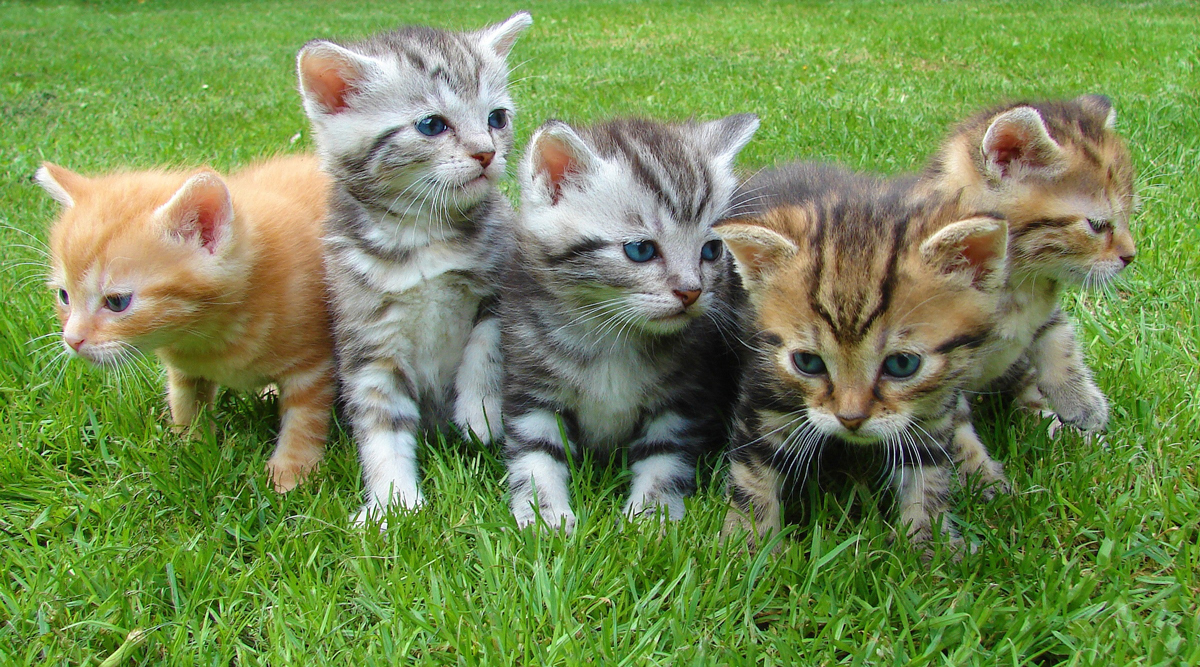
10. Stroking a dog can lower blood pressure
Did you know that petting a dog for as little as 15 minutes canreduce your blood pressure by 10%. Plus, it releases oxytocin, prolactin and serotonin whilst reducing your levels of cortisol (the stress hormone). Not a dog person? Not to worry, petting a cat (or even a rabbit) has the same effect.
11. Not all cats hate going in the water
It’s true that most felines hate water – and who can blame them? A cat with drenched fur is likely to feel uncomfortable, weighed down and unhappy about being covered with an unfamiliar scent. Having said that, some pedigree domestic breeds are known to enjoy taking an occasional dip, including the Maine Coon. When it comes to big cats, tigers and lions enjoy spending time cooling off in the water, and they’re good swimmers, too.
12. Greyhounds are the fastest breed of dog
They can run at speeds of up to 45 miles per hour, so this sleek and energetic breed is best suited to the more active owner! They make great family pets, though, thanks to their easy-going nature and ‘gentle giant’ characteristics.
13. Cats have more bones than humans
A typical adult house cat has around 290 bones while adult humans have 206. 10% of your cat’s bones are in her tail, which she uses to help her with kitty skills like balancing, falling and jumping with grace. Unless she’s a Manx – due to a genetic mutation, they are often born without tails. Luckily, Manx cats with no tail can still learn to balance thanks to their especially sensitive inner ears.
14. There’s a secret message for dogs hidden in a Beatles song
Play the 1967 Sgt Pepper album to your dog and you might notice them getting excited when they hear A Day in the Life. Paul McCartney has confirmed the band added the sound of a dog whistle to the track! Human ears won’t be able to detect the high-frequency tone, but your dog will – and he’ll probably want to start singing along!
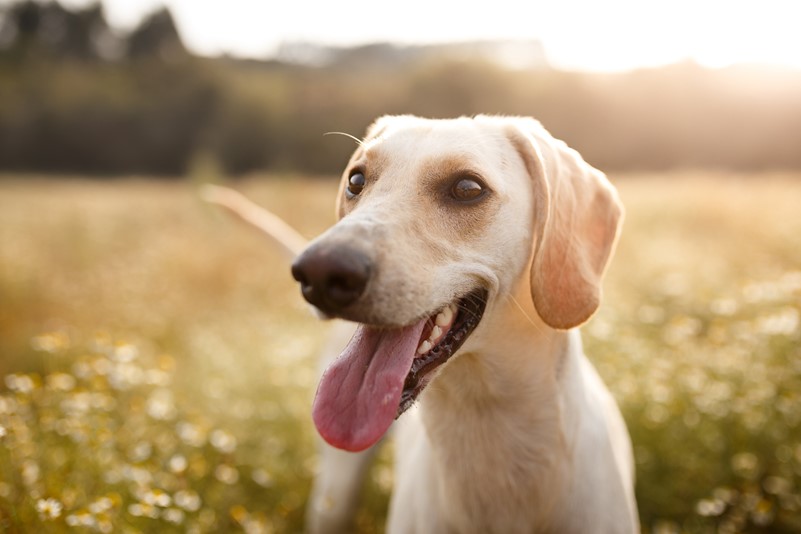
15. A cat’s tongue is covered in small hooks called papillae
Now you know why your cat’s tongue feels like sandpaper when she gives you an affectionate lick. These hooks help her to tear up food and remove dirt and debris as she grooms herself, which she can spend up to an hour a day doing. The only disadvantage is that she will end up swallowing anything caught in her tongue – hello hairballs!
16. Over 1,000 guide dogs are trained in the UK each year
It takes a minimum of 18 months to train a guide dog to look after a human. These remarkable animals look after people with visual or hearing impairments, mobility issues, chronic illnesses and mental health problems. Don’t forget, you should never stroke, talk or try to feed a guide dog without asking their owner’s permission. These dogs are working hard to take good care of their humans, so don’t distract them.
17. Your cat’s tail can tell you how she’s feeling
Does your cat stalk around the house with her tail high in the air? Chances are she’s feeling pretty content and confident. If it’s curved and looks a bit like a question mark, she wants to play. A low down tail tends to indicate a more serious (or even aggressive) mood. A swishing tail that’s swaying side to side belongs to a cat that’s fixated on an object – so she’s probably about to pounce! Is your cat's tail puffed up like a pipe cleaner? Watch out – she’s trying to make herself look bigger to keep danger away. And if it’s quickly whipping back and forth, she’s probably feeling both frightened and aggressive, so you’re best off keeping your distance. If you have more than one cat and they like to wrap their tails around each other, this is a sign of friendship and affection – aww!
18. Dog’s lick their noses to ‘taste’ scents
Most of us know dogs have a great sense of smell. The thin layer of mucus on their snout helps them to take in the chemicals of each scent they smell – you might even notice him licking his nose to find out what a smell ‘tastes’ of – and that’s why he has a wet nose!
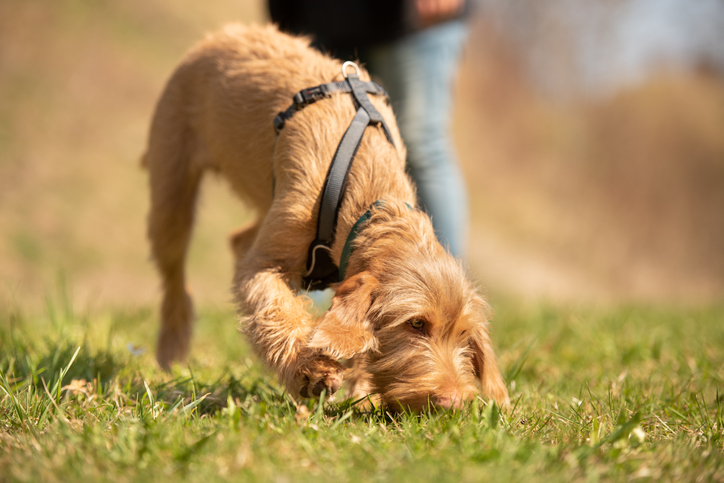
19. The ancient Egyptians considered cats to be sacred and magical
Aside from making great companions, cats were able to catch and kill vermin (as well as scorpions and snakes), helping in the fight against disease and starvation. Today’s domestic cats don’t seem to have forgotten this fact – they certainly seem to radiate an air of majesty as they walk around like they own the place!
20. Thirty-three brave dogs have been awarded the Dickin Medal
The PDSA Dickin Medal is awarded to animals serving in military conflict. In 2018, a dog named Kuga received this prestigious award for his ‘unstinting bravery and life-saving devotion to his handler and his unit’. Just one cat has ever received the medal. A skilled mouse cat named Simon received his award posthumously for the disposal of many rats on HMS Amethyst, despite the fact he was wounded himself.
Hopefully, you’ve learned something new about your furry friend!
We all love our pets but remember, introducing a pet to your family is a long-term commitment. Cats and dogs can live for more than 10 years (some cats even reach the ripe old age of 20). Would you be able to pay for treatment if your pet was injured or unwell?
Find out more about the types of pet insurance cover available and get a quote today from Purely Pets Insurance UK today.
Helpful Pages
Recent Posts
Pet Insurance Quote
- 98% claims paid *
- Claims paid directly to vets
- 24/7 vet video consultations
- Interest free monthly payments




